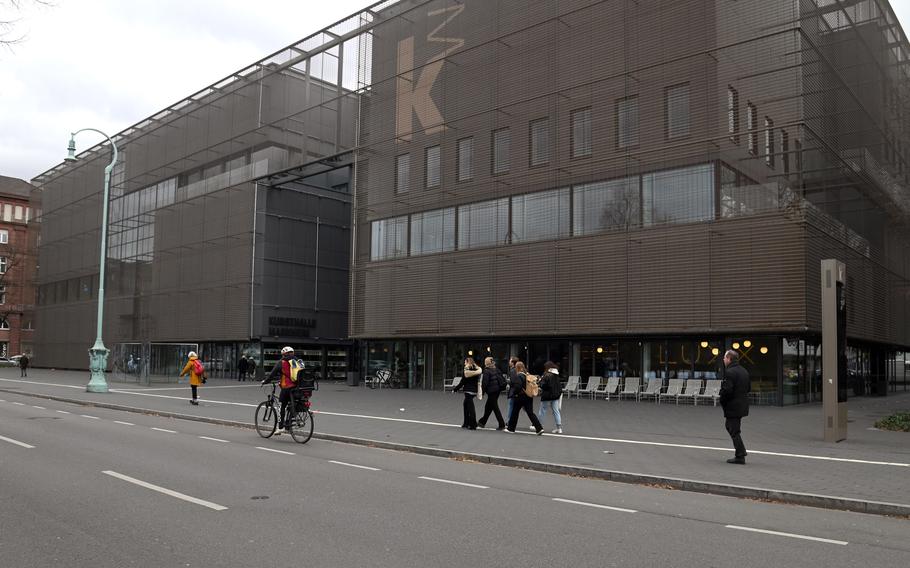
The Kunsthalle Mannheim’s new building, the Hector Bau, completed in 2017, is connected to the original art nouveau building built in 1907. The ensemble holds a remarkable collection of art, with space for temporary exhibitions. (Michael Abrams/Stars and Stripes)
Mannheim’s venerable art museum, the Kunsthalle, opened its doors in 1909 in a beautiful art nouveau edifice built two years earlier.
It was the brainchild of a young man named Fritz Wichert, whose vision was to assemble a public collection of modern art under the motto “art for all.”
Now, the original Kunsthalle has been joined by a new, modern building, adding more than 38,000 square feet of exhibition space.
Called the Hector Bau (building), after the patron who donated 50 million euros ($56 million) for its construction, the structure has a sign on the wall reading “Open for Art.”
The first major work acquired by the museum was Edouard Manet’s “Execution of Emperor Maximillian,” in 1910. Since then, its collection has grown to include works by such artists of renown as Paul Cezanne, Otto Dix, Max Beckmann, Marc Chagall, Paul Klee and Niki de Saint Phalle, just to name a few.
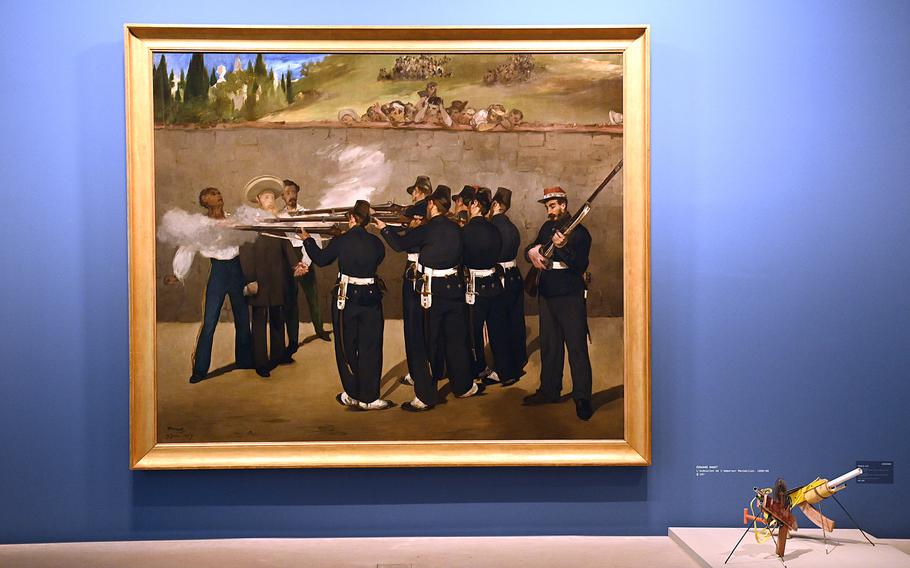
The Execution of Emperor Maximillian by Edouard Manet was, in 1910, one of the first paintings acquired by the Kunsthalle Mannheim, the German city’s excellent art museum and exhibition center. (Michael Abrams/Stars and Stripes)
But the Kunsthalle also has temporary exhibits, and the one showing now, titled “Mindbombs,” is a powerful display of what the museum calls “a highly topical artistic perspective on the history and political iconography of modern terrorism.”
It runs until April 24. At its center is Kader Attia’s “The Culture of Fear: An Invention of Evil,” an installation consisting of bookshelves and magazine or book covers pertaining to terrorism.
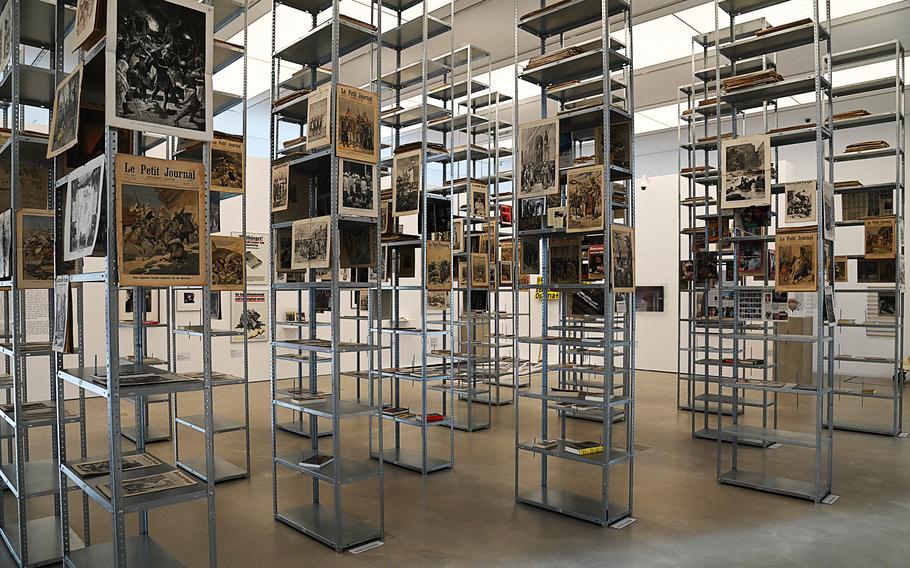
Kader Attia’s “The culture of fear: an invention of evil” is the centerpiece of the temporary exhibition at the Kunsthalle in Mannheim titled “Mindbombs - Visual Culture of Political Violence” that closes April 24, 2022. (Michael Abrams/Stars and Stripes)
A visit to the Kunsthalle begins in the 72-foot-high atrium, where a clock, part of an Alicja Kwade work called “The Void of the Moment in Motion,” spins above your head.
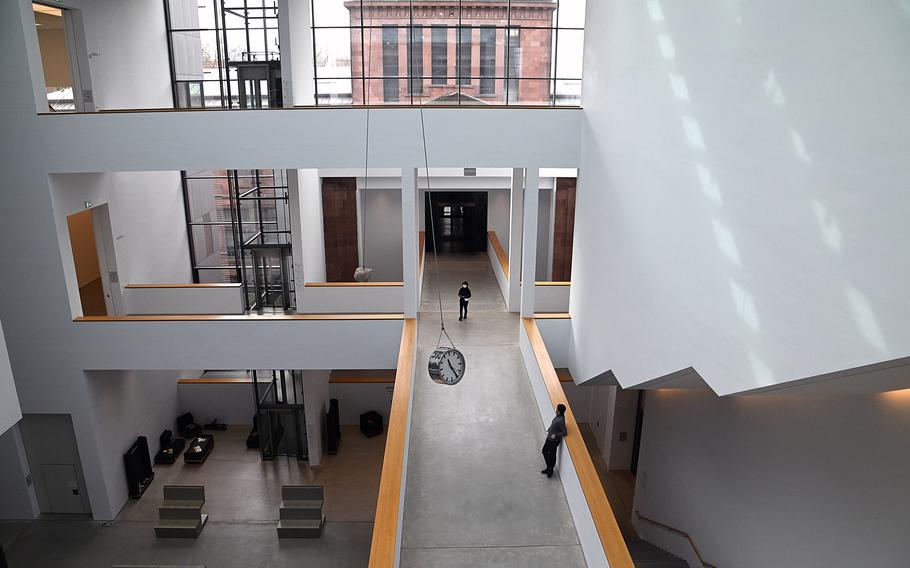
Inside the three-story Hector Bau, the modern, new building of the Kunsthalle Mannheim. The exhibition spaces and galleries of varying sizes, called Kubus, or cubes, are connected by bridges and staircases. The clock that swings over the passageway is part of a piece by Alicja Kwade called The Void of the Moment in Motion. The Kunsthalle’s original art nouveau building can be seen through the window in the background. (Michael Abrams/Stars and Stripes)
The nine exhibition spaces, which are called “kubus,” or cubes, are connected by stairs and bridges over the upper two stories. The original art nouveau building is joined to the Hector Bau by an enclosed walkway.
Manet’s painting of the unfortunate emperor is in Kubus 1, along with sculptures by Auguste Rodin and Edgar Degas.
Kubus 0 is filled with art from the museum’s collection, including a Max Lieberman self-portrait and a mesmerizing painting of the apostle Paul by Lovis Corinth.
If you don’t mind flashing lights and loud sounds, don’t miss William Kentridge’s installation “The Refusal of Time” on the floor above. It takes up the whole cube.
Most museums don’t have enough room to display all their treasures, so much is kept in their depots for storage. The Kunsthalle has dedicated one cube to works from its depot. The art is displayed in a jumble, reminiscent of a second-hand art shop.
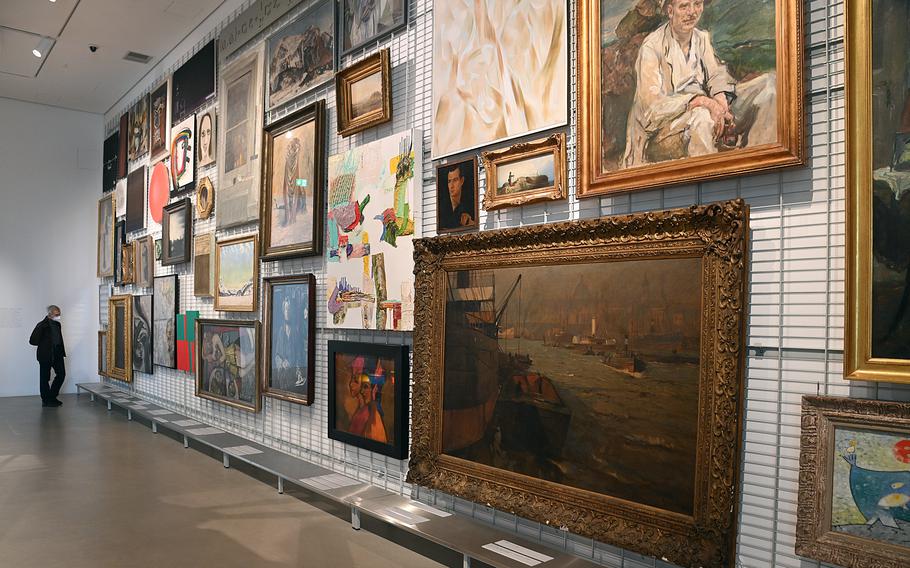
Many museums have too many pieces of art to display at once and are kept in storage. But the Kunsthalle Mannheim has one room, Kubus 8, jam-packed with a variety of works not normally on display. (Michael Abrams/Stars and Stripes)
Kubus 6 is dedicated to three giant works by Anselm Kiefer, one of Germany’s leading contemporary artists. “Jaipur,” “The Fertile Crescent” and the “The Lost Letter” are on display.
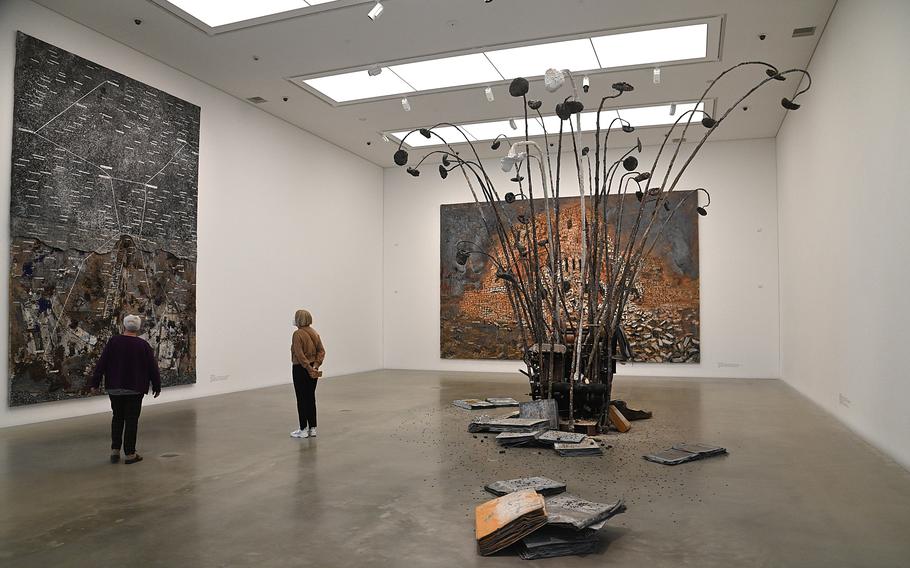
Vistitors to the Kunsthalle Mannheim look at Anselm Kiefer’s Jaipur, a mixed media work from 2005. On the rear wall is his The Fertile Crescent, in the foreground is his sculpture The Lost Letter. Kiefer is one of Germany’s leading contemporary artists. (Michael Abrams/Stars and Stripes)
A floor of the art nouveau building is devoted to an exhibit that traces the history of the Kunsthalle through its collection. Here, check out Ernesto De Fiori’s delicate bronze sculpture “Youth (The Sufferer)” or Umberto Boccioni’s “Unique Forms of Continuity in Space.”
One of the highlights here, though, is Max Beckmann’s fascinating 1925 painting “Carnival (Pierrette and Clown).” The work was one of many pieces considered “degenerate art” by the Nazis and confiscated from the museum.
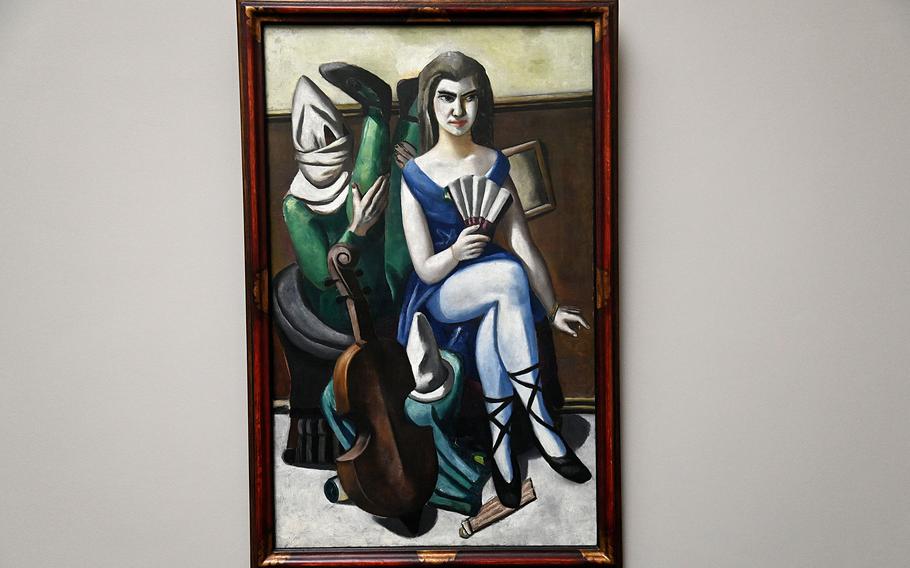
Max Beckmann’s Carnival (Pierrette and Clown) from 1925, is on display at the Kunsthalle Mannheim. The painting was one of many of Beckmann’s works considered degenerate art by the Nazis. (Michael Abrams/Stars and Stripes)
With paintings, sculptures and installations that follow the history of art over the past 150 or so years, the Kunsthalle Mannheim gives the serious art lover or casual viewer a lot to see.
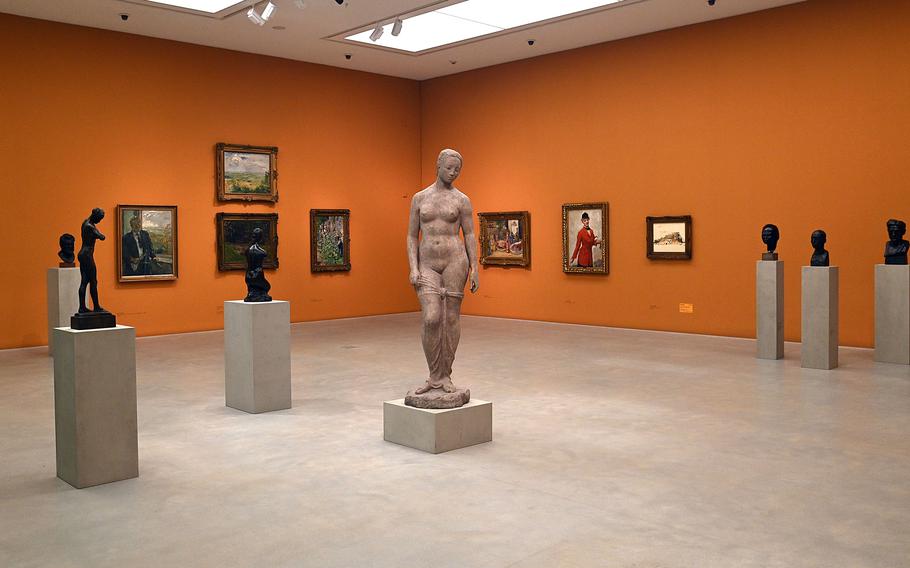
The museum’s room known as Kubus 0 exhibits pieces from the Kunsthalle Mannheim’s permanent collection, including “Tall Standing Woman,” by Wilhelm Lehmbruck, center, from 1910. (Michael Abrams/Stars and Stripes)
On the QT
Note: 2G coronavirus restrictions are in place, meaning visitors need to be fully vaccinated or recovered. FFP-2 masks are mandatory.
Directions: The Kunsthalle is at Friedrichsplatz 4, 68165 Mannheim. Exit A6 at Mannheim-Mitte and follow the road straight into town. When you see the city’s trademark water tower, look for the Kunsthalle parking garage. It is about an hour’s drive from Kaiserslautern and Wiesbaden and about two hours from Stuttgart. It is about an eight-minute walk from the city’s main train station.
Open hours: Tuesday, 10 a.m.-6 p.m.; Wednesday, 10 a.m.-8 p.m., but until 10 p.m. on the first Wednesday of the month (free admission starting at 6 p.m.); Thursday to Sunday, 10 a.m.-6 p.m.
Prices: Admission is 12 euros for adults. A family ticket for two adults with children under 18 years of age costs 20 euros. Parking at the Kunsthalle garage is 2 euros per hour.
Food: There is a restaurant, Luxx, inside the museum.
Information: Online: kuma.art/en. The Kunsthalle also has an excellent app for Apple and Android phones.